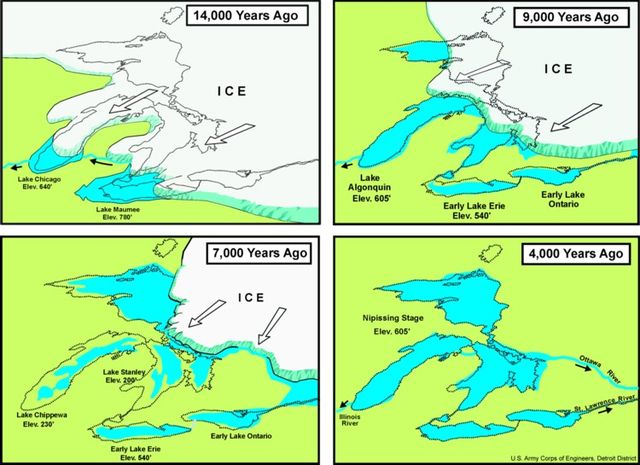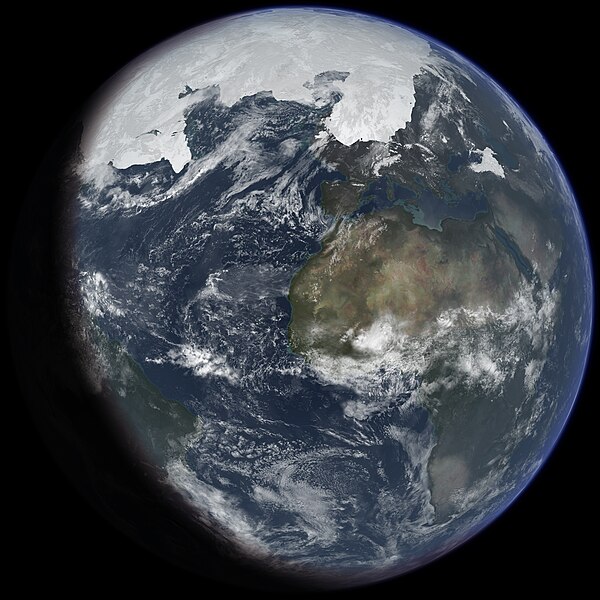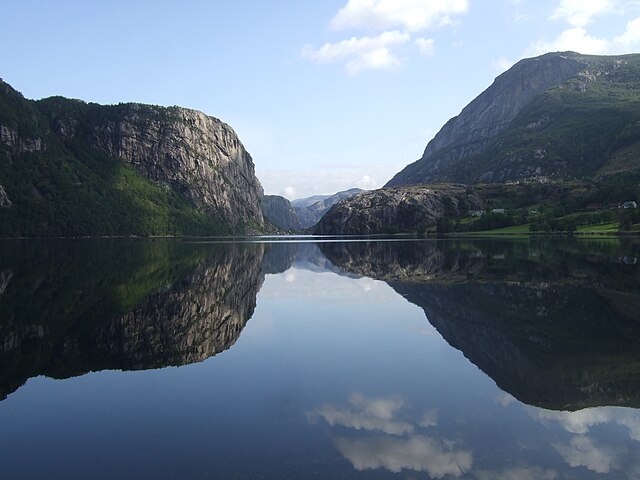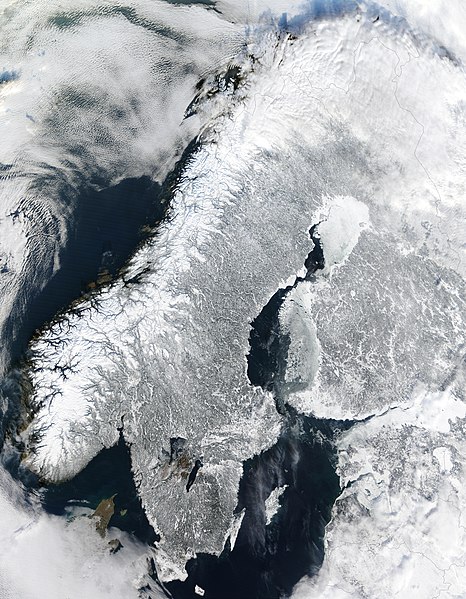The Quaternary glaciation, also known as the Pleistocene glaciation, is an alternating series of glacial and interglacial periods during the Quaternary period that began 2.58 Ma and is ongoing. Although geologists describe this entire period up to the present as an "ice age", in popular culture this term usually refers to the most recent glacial period, or to the Pleistocene epoch in general. Since Earth still has polar ice sheets, geologists consider the Quaternary glaciation to be ongoing, though currently in an interglacial period.
A diagram of the formation of the Great Lakes
An ice age is a long period of reduction in the temperature of Earth's surface and atmosphere, resulting in the presence or expansion of continental and polar ice sheets and alpine glaciers. Earth's climate alternates between ice ages, and greenhouse periods during which there are no glaciers on the planet. Earth is currently in the ice age called Quaternary glaciation. Individual pulses of cold climate within an ice age are termed glacial periods, and intermittent warm periods within an ice age are called interglacials or interstadials.
An artist's impression of ice age Earth at Pleistocene glacial maximum
Haukalivatnet lake (50 meters above sea level) where Jens Esmark in 1823 discovered similarities to moraines near existing glaciers in the high mountains
Stages of proglacial lake development in the region of the current North American Great Lakes
Scandinavia exhibits some of the typical effects of ice age glaciation such as fjords and lakes.




